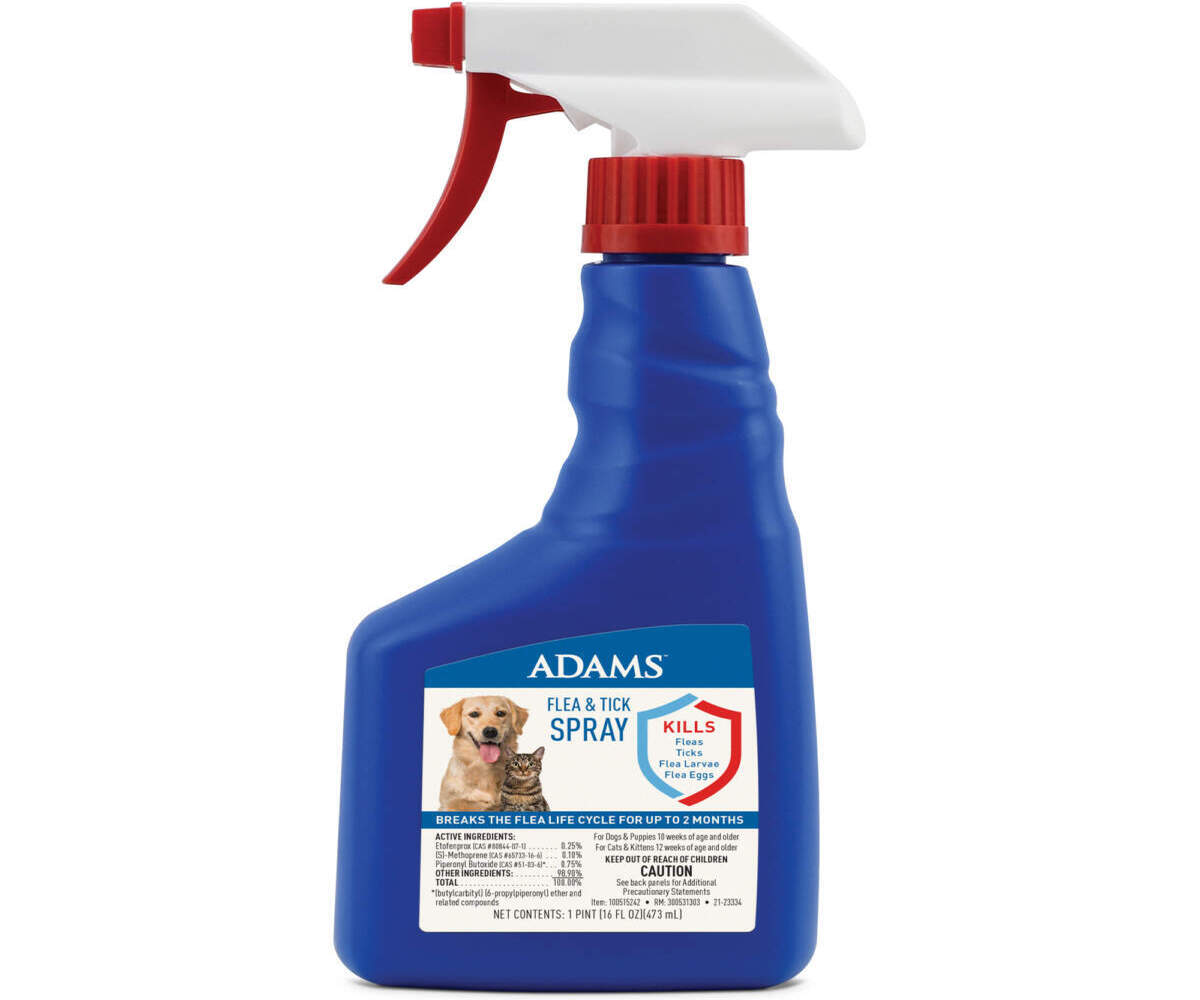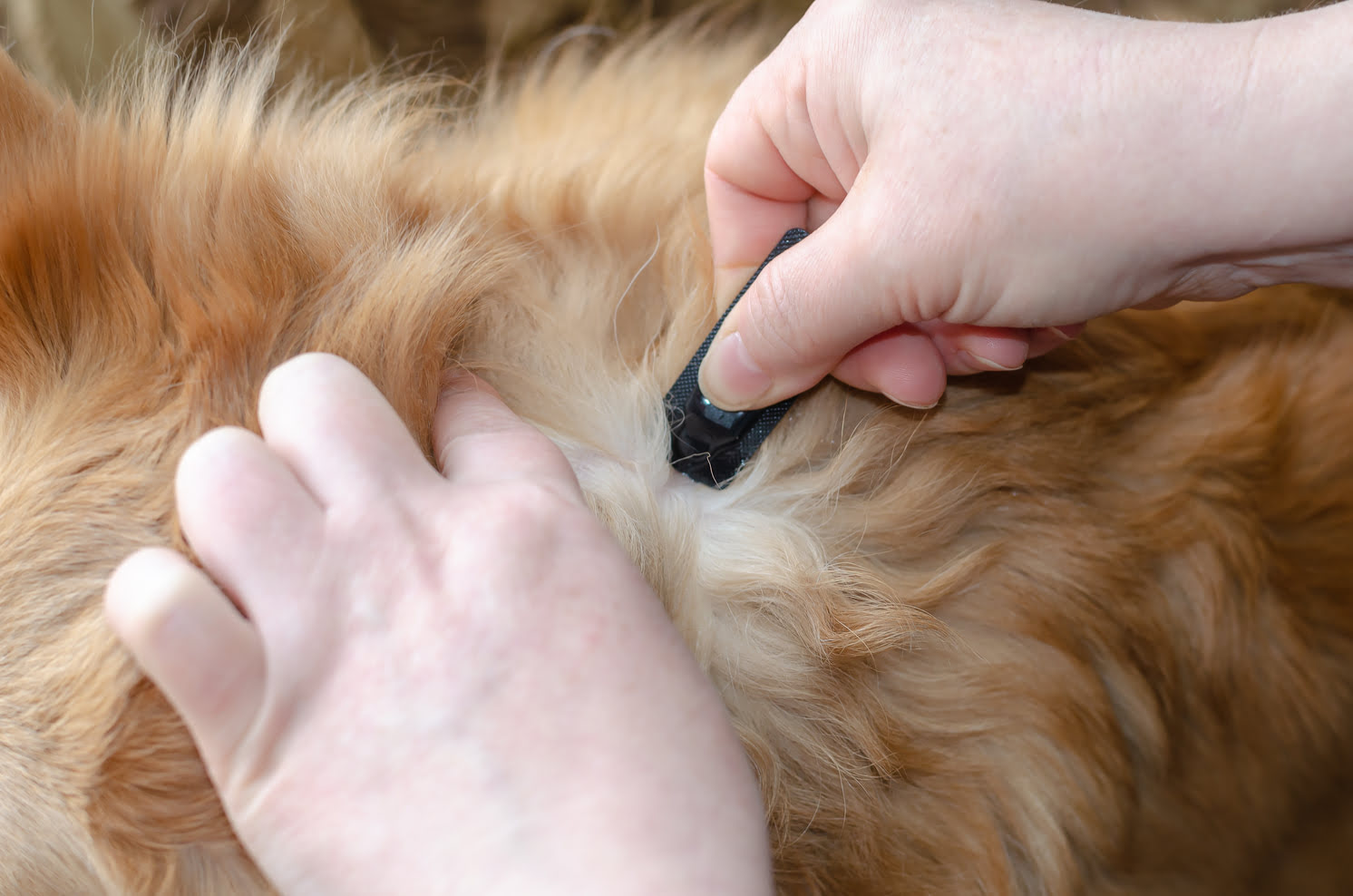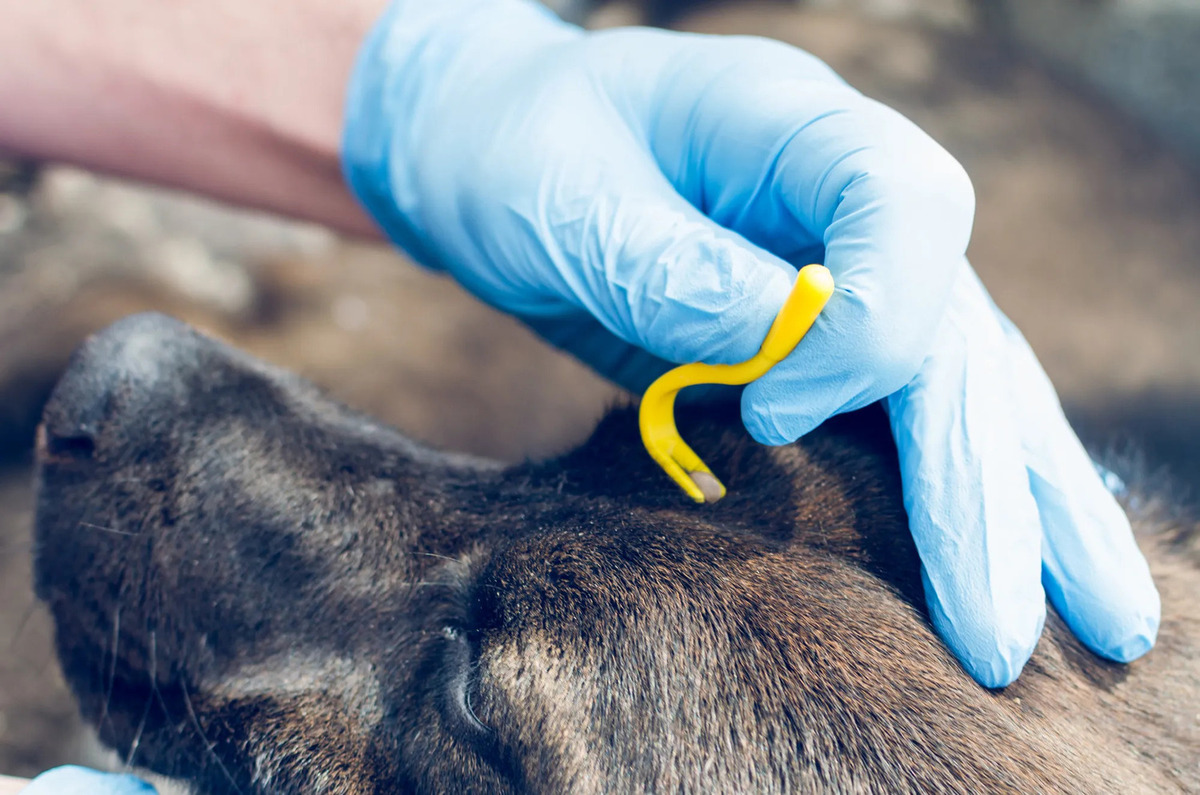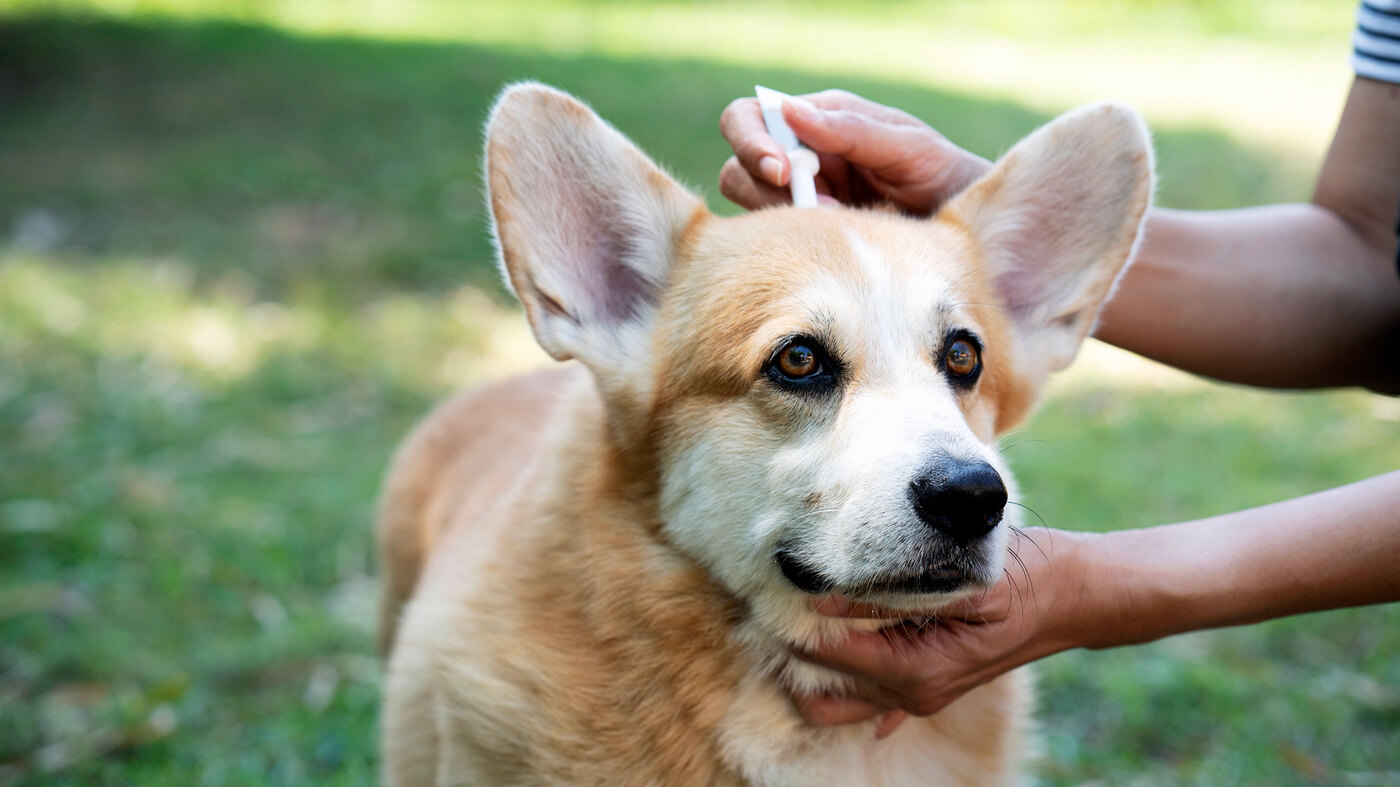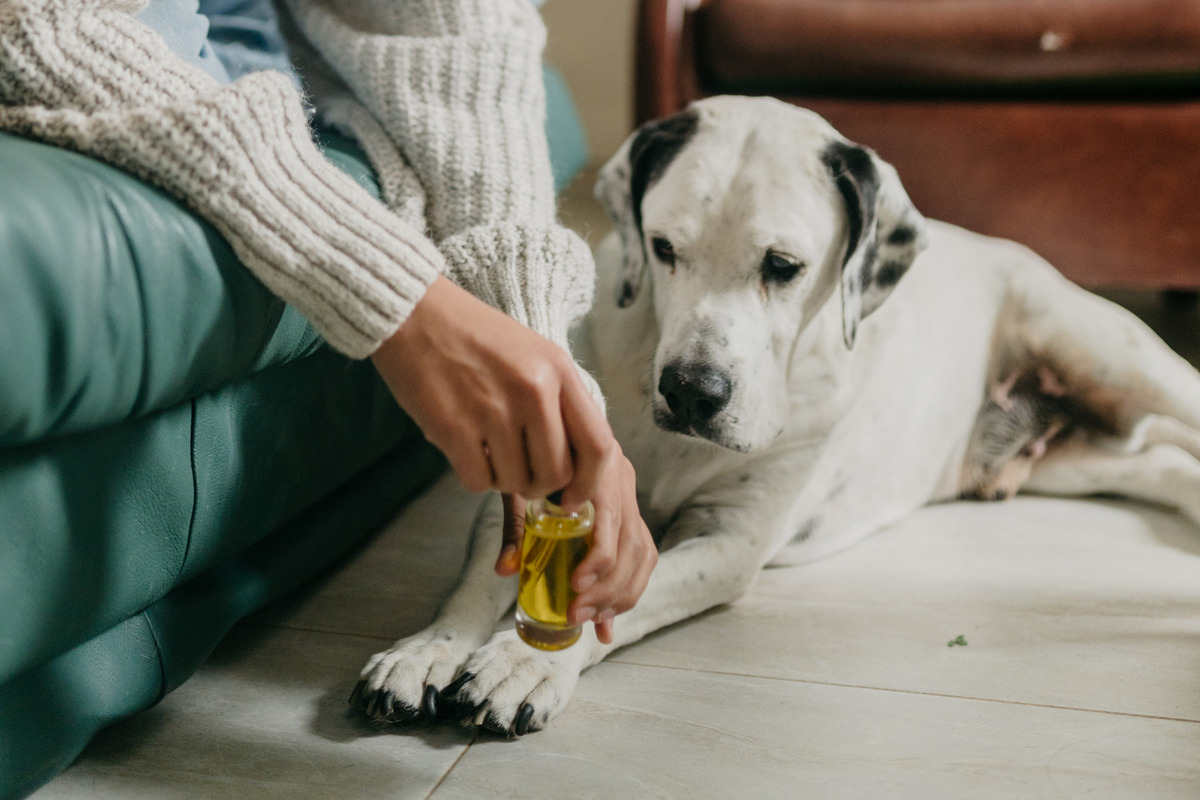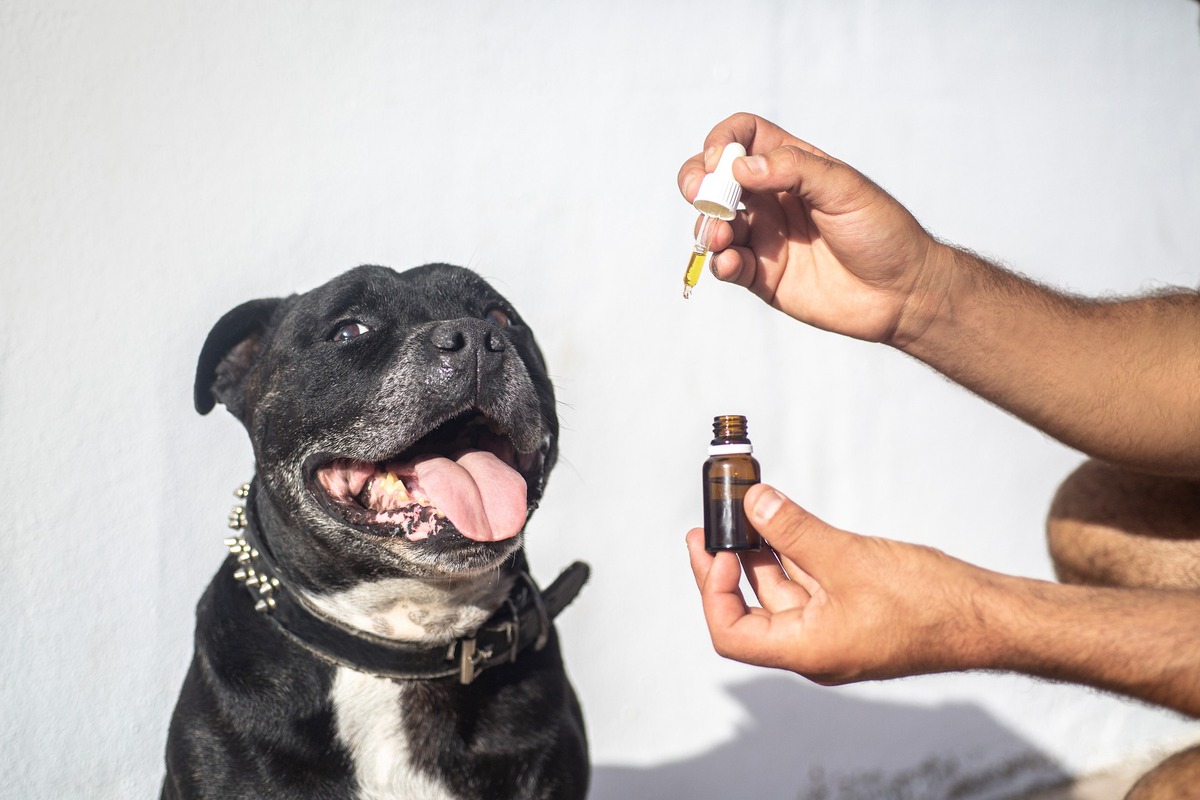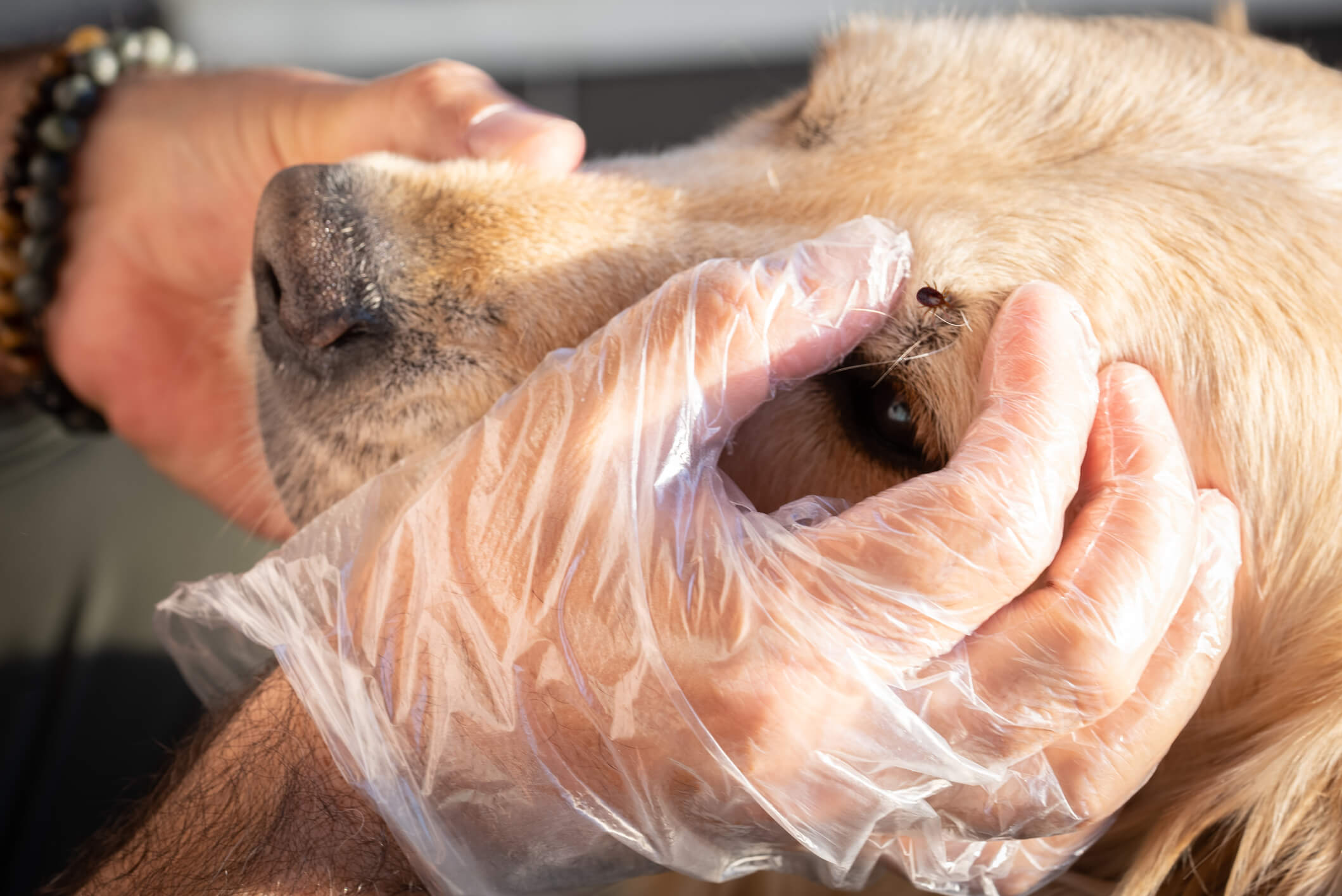Home>Health & Wellness>Common Health Issues>How To Use Tick Dip For Dogs
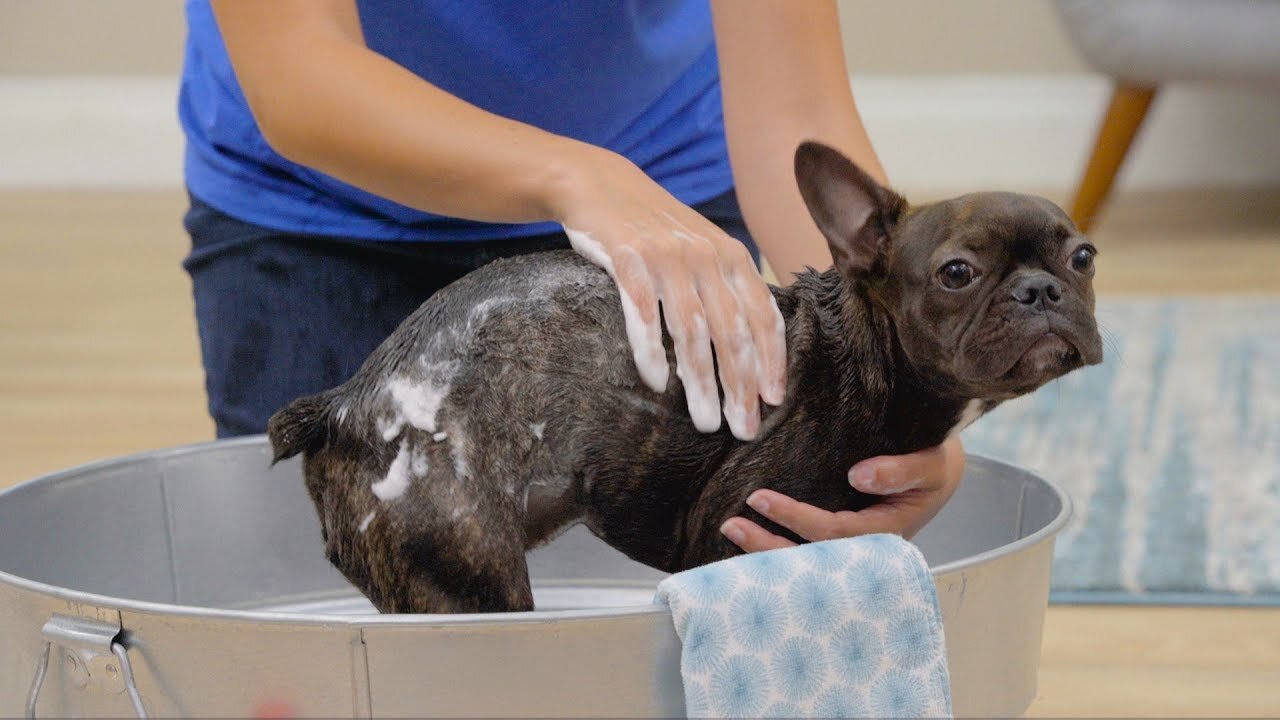

Common Health Issues
How To Use Tick Dip For Dogs
Published: February 3, 2024
Learn how to use tick dip for dogs to prevent common health issues. Keep your furry friend healthy and happy with these simple tips.
(Many of the links in this article redirect to a specific reviewed product. Your purchase of these products through affiliate links helps to generate commission for Pawsomeoldies.com, at no extra cost. Learn more)
Table of Contents
Introduction
Tick infestations can be a common concern for dog owners, especially in areas with dense vegetation or wildlife. These tiny parasites can not only cause discomfort for our furry friends but also pose health risks due to the potential transmission of diseases. As responsible pet owners, it's crucial to be proactive in protecting our dogs from these pesky critters.
In addressing tick infestations, one effective solution that has gained popularity is the use of tick dip for dogs. This specialized treatment offers a powerful defense against ticks, helping to eliminate existing infestations and prevent future occurrences. Understanding the proper usage of tick dip is essential for ensuring its effectiveness and safeguarding the well-being of our canine companions.
In this comprehensive guide, we will delve into the intricacies of tick dip for dogs, exploring its mechanisms, precautions, application methods, and post-treatment care. By gaining a deeper understanding of this valuable tool in tick control, pet owners can equip themselves with the knowledge needed to protect their beloved dogs from the perils of tick infestations.
Read more: How To Use Frontline Flea And Tick For Dogs
What is Tick Dip?
Tick dip is a specialized liquid solution formulated to eradicate ticks and other external parasites that may afflict dogs. This potent treatment is designed to be diluted with water and applied to the dog's coat, effectively targeting and eliminating ticks upon contact. The active ingredients in tick dip are meticulously selected to ensure maximum efficacy while minimizing potential harm to the dog.
Tick dip solutions often contain insecticides or acaricides that are specifically tailored to combat ticks. These active agents work by disrupting the vital physiological functions of ticks, ultimately leading to their demise. Additionally, tick dips may incorporate ingredients that provide residual protection, serving as a deterrent against future infestations.
It's important to note that tick dip formulations are distinct from standard shampoos or sprays, as they are intended for more intensive treatment and prolonged protection. When used as directed, tick dip can offer a comprehensive solution for addressing existing tick infestations and fortifying the dog against potential reinfestation.
The efficacy of tick dip is attributed to its ability to penetrate the dog's coat and reach the skin, where ticks typically reside. By directly targeting these parasites at their habitat, tick dip serves as a formidable weapon in the battle against tick infestations. Moreover, the residual effects of tick dip contribute to a sustained shield against ticks, bolstering the dog's defenses over an extended period.
In essence, tick dip represents a crucial component of a holistic approach to tick control for dogs. When incorporated into a comprehensive tick prevention regimen, tick dip can significantly reduce the risk of tick-borne diseases and enhance the overall well-being of dogs, allowing them to thrive in a safer and more comfortable environment.
How Does Tick Dip Work?
Tick dip operates through a multi-faceted mechanism that targets ticks at various stages of their life cycle, effectively disrupting their presence and preventing reinfestation. The active ingredients in tick dip solutions are meticulously chosen to deliver a potent and targeted assault on these resilient parasites.
Upon application, the diluted tick dip solution permeates the dog's coat, reaching the skin where ticks often reside. This direct contact enables the active agents within the tick dip to swiftly incapacitate ticks upon contact, impeding their ability to feed on the dog and reproduce. By disrupting the vital physiological functions of ticks, the active ingredients effectively neutralize these parasites, curbing the infestation and preventing its escalation.
Furthermore, tick dip solutions may incorporate residual effects, forming a protective barrier that deters future infestations. This residual shield acts as a formidable deterrent, deterring ticks from latching onto the dog and establishing a new infestation. As a result, the dog benefits from sustained protection against ticks, minimizing the risk of reinfestation and the associated health hazards.
In addition to its direct impact on ticks, tick dip also contributes to the overall hygiene and well-being of the dog. By eradicating ticks and reducing their presence in the dog's environment, tick dip helps alleviate discomfort and potential health risks associated with tick infestations. This not only enhances the dog's physical comfort but also promotes a healthier and more conducive living environment for both the dog and its human companions.
In essence, the efficacy of tick dip stems from its ability to deliver a comprehensive and targeted assault on ticks, addressing existing infestations and fortifying the dog against future threats. By leveraging a combination of direct action and residual protection, tick dip serves as a vital tool in safeguarding the well-being of dogs, allowing them to thrive in a safer and more tick-resistant environment.
Precautions Before Using Tick Dip
Before embarking on the application of tick dip for dogs, it is imperative to adhere to essential precautions to ensure the safety and well-being of both the dog and the individuals involved in the treatment process. These precautions serve as vital guidelines, helping to mitigate potential risks and optimize the effectiveness of the tick dip treatment.
-
Consultation with a Veterinarian: Prior to initiating the use of tick dip, consulting a veterinarian is highly recommended. A professional veterinary assessment can provide valuable insights into the specific needs of the dog, ensuring that the chosen tick dip formulation is suitable for the dog's breed, age, and overall health status. Additionally, veterinarians can offer personalized guidance on the application process and address any concerns or queries related to tick dip usage.
-
Selection of Appropriate Tick Dip Formulation: Not all tick dip formulations are universally suitable for every dog. It is essential to carefully select a tick dip solution that aligns with the dog's individual requirements and any pre-existing health conditions. By choosing a formulation that is compatible with the dog's specific needs, potential adverse reactions can be minimized, and the treatment's efficacy can be optimized.
-
Thorough Understanding of Application Instructions: Before applying tick dip, thoroughly familiarize yourself with the manufacturer's instructions and guidelines. Pay close attention to the recommended dilution ratios, application frequency, and any specific precautions or contraindications outlined by the product's manufacturer. Adhering to these instructions diligently is crucial for ensuring the safe and effective administration of tick dip.
-
Protective Measures for Handlers: When handling tick dip solutions, it is essential to prioritize personal safety. Utilize protective gear such as gloves and, if applicable, protective clothing to prevent direct skin contact with the solution. Additionally, ensure adequate ventilation in the application area to minimize inhalation exposure.
-
Avoidance of Contact with Eyes and Mucous Membranes: During the application of tick dip, exercise caution to prevent the solution from coming into contact with the dog's eyes, ears, or any mucous membranes. Shielding these sensitive areas during the application process is crucial for preventing potential irritation or discomfort.
-
Preventing Ingestion and Environmental Contamination: Take measures to prevent the dog from ingesting the tick dip solution during and after application. Additionally, avoid contaminating water sources or environmental surfaces with the diluted tick dip solution, as this can pose risks to other animals and the ecosystem.
By conscientiously observing these precautions, pet owners can lay a solid foundation for the safe and effective utilization of tick dip for their dogs. These proactive measures not only mitigate potential risks but also contribute to the overall success of the tick dip treatment, fostering a safer and more conducive environment for the dog's well-being.
How to Use Tick Dip for Dogs
Using tick dip for dogs requires a systematic approach to ensure its optimal efficacy and the safety of the dog. By following the recommended steps and guidelines, pet owners can effectively administer tick dip, providing their canine companions with robust protection against tick infestations. Here's a comprehensive overview of the essential steps involved in using tick dip for dogs:
-
Dilution Process: Begin by diluting the tick dip solution according to the manufacturer's instructions. Typically, this involves mixing the concentrated tick dip with water in a designated container. It is crucial to adhere to the specified dilution ratios to achieve the desired potency while minimizing the risk of adverse effects.
-
Preparation of Application Area: Select a well-ventilated and secure area for applying the tick dip. This space should be conducive to the dog's comfort and allow for easy cleanup post-treatment. Additionally, ensure that the area is free from potential environmental contaminants that could compromise the effectiveness of the tick dip.
-
Application to the Dog's Coat: With the diluted tick dip solution prepared, carefully apply it to the dog's coat, ensuring thorough coverage. Begin by pouring the solution over the dog's back, gently massaging it into the coat to facilitate penetration. Take care to avoid contact with the dog's eyes, ears, and mucous membranes during the application process.
-
Targeting Problem Areas: Pay special attention to areas where ticks are commonly found, such as the neck, ears, and between the toes. These regions are prime habitats for ticks and warrant meticulous application of the tick dip solution to effectively combat existing infestations and prevent reinfestation.
-
Allowing the Solution to Dry: After applying the tick dip, allow the dog to air dry naturally in a secure and controlled environment. This facilitates the absorption of the solution into the coat and skin, maximizing its efficacy in targeting ticks and providing residual protection.
-
Post-Treatment Monitoring: Following the application of tick dip, monitor the dog for any signs of adverse reactions or discomfort. Additionally, prevent the dog from swimming or being exposed to water for the specified duration, as this can compromise the residual effects of the tick dip.
-
Adhering to Application Frequency: Depending on the specific tick dip formulation, adhere to the recommended frequency of application. This may vary based on factors such as the severity of infestation and the duration of residual protection provided by the tick dip.
By meticulously following these steps and guidelines, pet owners can harness the full potential of tick dip for dogs, fortifying their beloved companions against the perils of tick infestations. This proactive approach not only safeguards the dog's well-being but also fosters a harmonious and tick-resistant environment for both the dog and its human family.
Aftercare and Monitoring
After the application of tick dip for dogs, diligent aftercare and monitoring play a pivotal role in ensuring the well-being of the dog and optimizing the effectiveness of the treatment. This phase encompasses a series of essential measures aimed at safeguarding the dog's health and assessing the outcomes of the tick dip application.
Post-Treatment Observation
Following the application of tick dip, it is crucial to observe the dog for any signs of adverse reactions or discomfort. Monitor the dog's behavior, paying attention to indicators such as excessive scratching, skin irritation, or unusual lethargy. While mild reactions may occur as the dog adjusts to the treatment, persistent or severe symptoms warrant prompt attention and potential consultation with a veterinarian.
Preventing Water Exposure
To preserve the efficacy of the tick dip, it is imperative to prevent the dog from being exposed to water for the specified duration post-treatment. This includes refraining from bathing the dog or allowing it to swim, as moisture can compromise the residual effects of the tick dip. By maintaining a dry environment for the designated period, pet owners can optimize the treatment's protective capabilities.
Environmental Considerations
In addition to attending to the dog's immediate well-being, pet owners should also address environmental factors that could impact the treatment's efficacy. This involves minimizing the dog's contact with potential contaminants and ensuring that the living environment remains conducive to the dog's recovery and ongoing protection against ticks.
Read more: What Can Be Used To Keep Ticks Off Dogs
Ongoing Monitoring for Reinfestation
While tick dip offers robust defense against existing tick infestations, ongoing monitoring for signs of reinfestation is essential. Regularly inspect the dog's coat for any resurgence of ticks, paying particular attention to common hotspot areas. Promptly addressing any signs of reinfestation can prevent the escalation of tick populations and uphold the dog's long-term protection.
Adhering to Follow-Up Recommendations
Depending on the specific tick dip formulation and the dog's individual circumstances, adherence to any follow-up recommendations from the veterinarian or product manufacturer is crucial. This may include scheduled reapplications of the tick dip or additional preventive measures to fortify the dog's defenses against ticks.
By conscientiously attending to these aftercare measures and maintaining vigilant monitoring, pet owners can ensure the optimal outcomes of the tick dip treatment for their dogs. This proactive approach not only safeguards the dog's well-being in the aftermath of the treatment but also contributes to a sustained and effective defense against tick infestations, allowing the dog to thrive in a safer and more tick-resistant environment.
Conclusion
In conclusion, the utilization of tick dip for dogs represents a pivotal strategy in combating tick infestations and safeguarding the well-being of our beloved canine companions. This comprehensive treatment offers a multi-faceted approach to addressing existing tick infestations while fortifying dogs against the risks of reinfestation. By permeating the dog's coat and targeting ticks at their habitat, tick dip delivers a potent and targeted assault on these resilient parasites, effectively neutralizing their presence and minimizing the associated health hazards.
The efficacy of tick dip extends beyond its immediate impact, encompassing residual protection that serves as a formidable deterrent against future infestations. This sustained shield not only alleviates the discomfort and health risks posed by ticks but also fosters a safer and more harmonious living environment for both dogs and their human companions.
Furthermore, the conscientious application of tick dip, coupled with diligent aftercare and monitoring, ensures the optimal outcomes of the treatment, promoting the dog's recovery and long-term protection. By adhering to essential precautions, selecting appropriate tick dip formulations, and following the recommended application guidelines, pet owners can harness the full potential of tick dip, empowering their dogs to thrive in a safer and more tick-resistant environment.
In essence, the integration of tick dip into a comprehensive tick prevention regimen is a testament to our commitment to the well-being of our canine companions. By proactively addressing tick infestations and fortifying dogs against future threats, we not only enhance their physical comfort and health but also cultivate a nurturing and secure environment where they can flourish.
As responsible pet owners, it is imperative to recognize the significance of tick control and the pivotal role that tick dip plays in this endeavor. By embracing this proactive approach, we can ensure that our dogs are equipped with robust defenses against tick infestations, allowing them to revel in a life free from the perils of these persistent parasites. Through the judicious use of tick dip and a steadfast dedication to our dogs' well-being, we can embark on a journey towards a future where tick-related concerns are relegated to a distant memory, and our dogs can bask in a healthier and more vibrant existence.
